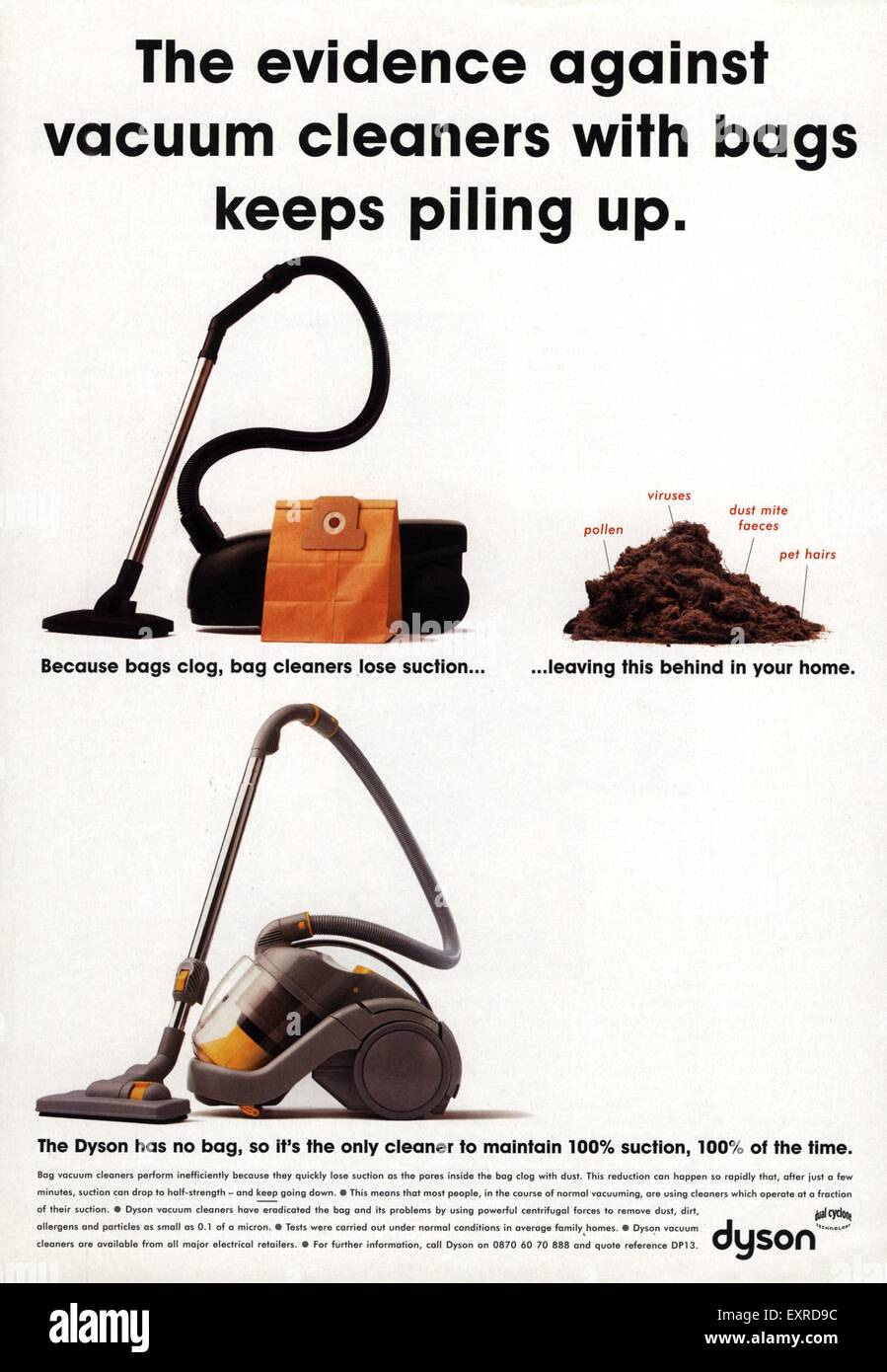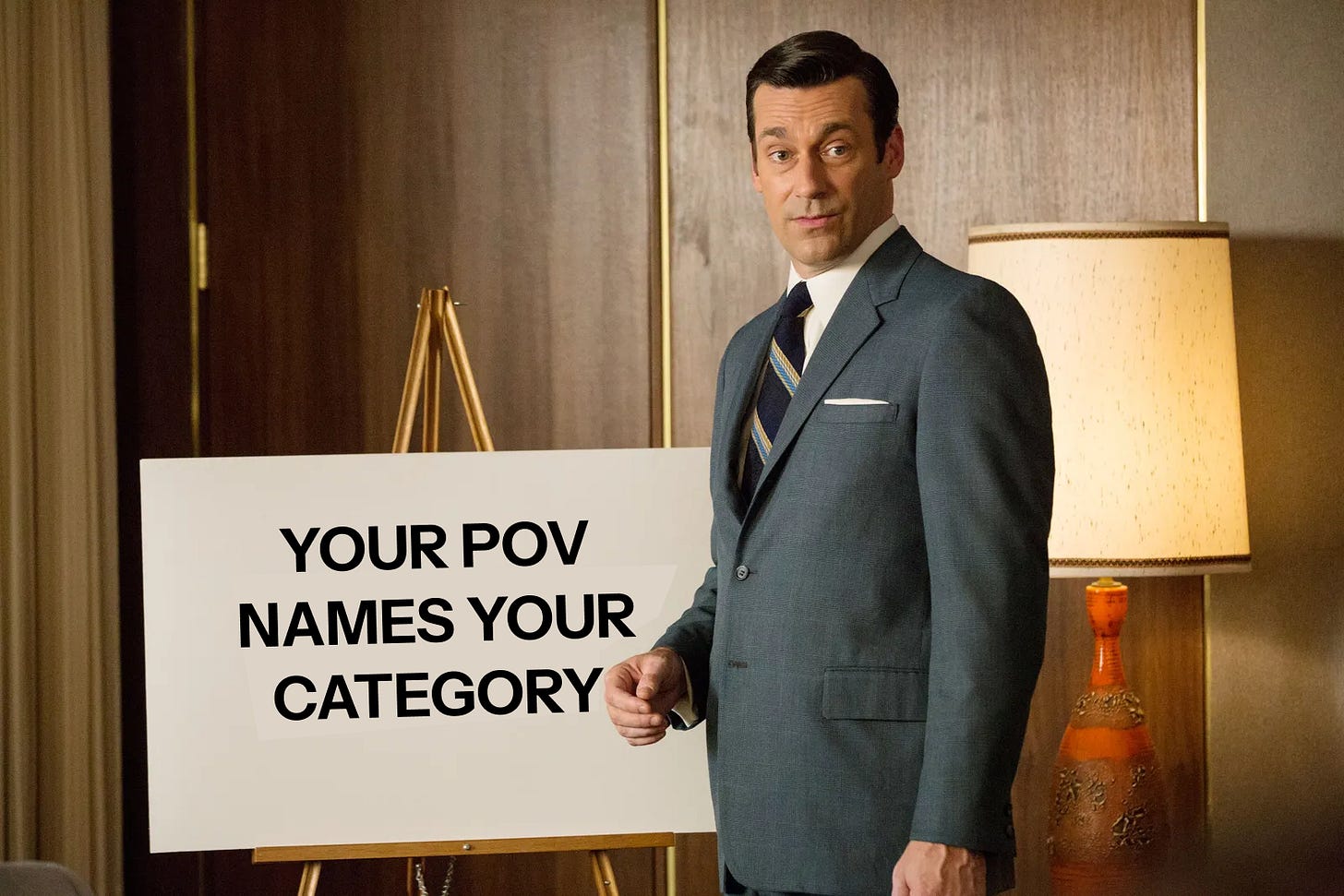How Category Designers Unlock Killer Category Names
I can’t tell you if your category name is right or wrong (But my process can)

The Zoom started as many of my client discovery calls do.
After the customary introductions of establishing where in the world everyone is dialing in from, and comparing the merits of the various call recorders that accompanied each human, the prospective client delivered their question:
“So Chris, we’ve been working internally on our Category Design for a while, and I think we are good with most of it, but I just wanted to ask what you think of the category name we have in mind. We were thinking of calling it: “______ _______.” What do you think?”
I paused and considered it.
It was a gorgeous name, for sure.
The sort of name that makes you rock back in your chair, stroke your mustache, and say “MMMMMMmmmmMMMMMmmmmm….”
I had to admit I loved the sound of it.
But was it right for their category? I couldn’t say. Not yet anyway.
So instead, I told them the same thing I’d told the last few clients that asked the same question:
“I love it, but I don’t yet know if it is right for you.
But don’t worry, because I know a process that does!”
Because what makes a category name right or wrong for each company, is not how it sounds, but what it does. Specifically, does it do the right job that their business needs it to do?
In other words, what matters it’s all about WHAT the name says, not HOW it says it.
Here’s why…
What Makes a Killer Category Name?
To answer that, you first have to consider what is the point of Category Design at all - or any positioning strategy, for that matter,

In my opinion, it is all about making it easy for your customer to choose you. That breaks down into
Presenting a simple choice (not a complicated comparison)
Humans don’t like being given complicated choices to make. When confronted with a cognitively taxing comparison of options, the buyer may decide not to make a decision at all. The simplest choices are binary - “this or that?” “A or B?”Making the answer feel inevitable.
That is, you present the options such that there is only one good choice: your way. Make the other option sound wrong, if not entirely stupid.
You may think this to be true of all marketing, but what most people miss is that humans make a category decision before making a solution (product) decision.
For example:
You ask “Shall we eat Indian or Italian food tonight?” before you compare “Mama Mia’s or Pappa Mia’s?”
You think “Do I need an SUV or a Sedan?” before you think “Audi Q5 or BMW X3?”
And so on…
Therefore,
The killer category names - the ones that really slay - are those that present a clear choice between your way, vs everyone else’s way, at the category level.
But for this to work, you need to carefully present precisely the right decision to the customer.
What Makes a Category Name “Right?”
The category name is only right for you, when the A or B decision it poses hinges directly on your unique POV.
You want it so that once the customer decides that A is the right route for them, you are the only valid destination.
So what makes a category name right or wrong has nothing to do with how lovely the category name sounds, but that it asks the customer to choose whether they agree and value something that is your superpower, and nobody else’s.
This is why I never try to answer in a discovery call whether a category name is right or wrong, until we have established what the client’s superpower is, and whether that is truly unique and valuable in the market.
Let’s take a look at how we get to that…
How POV Slices The Market In Two
A great POV can completely redraw the battle lines of a market.

For example: Back in the early 1990’s, the vacuum cleaner market was brutally competitive and noisy.
You had big household named brands competing on features like the power of their motor, or how quiet is it, or the length of the cord and whether it retracts, or the light on the front to see under the sofa, and much more. There was even a brand so eponymous that to this day my parents talk about “Hoovering the carpet” even though they’ve not owned a Hoover® for 30 years.
Traditional logic would have told you that no upstart could possibly gain a foothold in such an entrenched market, yet British inventor James Dyson sliced it wide open by evangelizing a completely fresh point-of-view on the problem.
Dyson taught the world that what mattered was not the motor, or any of those other gimmicks, it was all about the bag.
Prior to this, every owner of a vacuum cleaner had been so accepting of this problem, it was like they couldn’t even see it. But once Dyson made the problem visible, nobody could unsee it.
Dyson’s POV cast aside every competitive narrative existing in the vacuum cleaner market, and replaced it with a simple question:
You don’t want a vacuum cleaner with a bag, do you?
This question poses a very simple choice for prospective customers:
Buy a vacuum with a bag?
Buy a vacuum without a bag?
Once customers had been influenced by Dyson’s story about the evils of the bag, only one option makes sense. The other option seemed stupid.
By 2001 Dyson’s DC01 was the top-selling upright in the UK, and soon after Dyson was the #1 vacuum brand in the USA.
You Can Do This Too.
Your POV is the summary encapsulation of your beliefs and opinions that make you and your solution different from everyone else.

When you create a nice short, sharp POV about the problem, it sets up the need for a new type of solution. For example:
Everyone agrees that <loss of suction> is a problem
But what everyone misunderstands is that the real root of the problem is <not the motor, it’s the bag>
Therefore we need a type of solution that <does not have a bag>
That last piece is like a razor that cuts, or bisects the whole market, and all the solutions in it, into just two categories.
A category of products that DO agree with your POV (and prove that they do)
A category of products that DON’T agree with your POV, (and prove that they don’t)
This redraws the battle lines of the market around your narrative, and recreates the market in your image.
Plot twist: You Don’t Name Your Category - Your POV Does
This comes as a surprise to many people that have been drawn to category design by the allure of mustache-strokingly gorgeous category names.
It’s not the job of some Don Draper-esque creative genius to name your category at all. In fact your POV almost names your category for you.
Once you’ve decided the POV that slices the market, you just need to put the simplest, most obvious names on the two sides that fall either side of the bisection.
You just ask:
If a product DOES agree <your POV> what would it logically be called? (This is your category)
If a product DOES NOT agree <your POV> what would it logically be called? (This is the anti-category)
These two category definitions work best together as an opposing pair. They should be two sides of the same coin.
To go back to the example of Dyson,
POV: If you believe that the real reason vacuum cleaners lose suction is that bags always clog, then you only have two choices:
Do you want a vacuum cleaner with a bag?
Or a “Bagless” Vacuum cleaner?
Whoomp. There it is.
Let’s look at a few more examples.
Dyson’s POV named the category perfectly because it reduced the complicated decision of vacuum cleaner down to the single issue on which Dysons were utterly peerless. Being “Bagless.”
That’s my all-time favorite case study of Category Design, but it is not the only one.
Figma: Collaborative Design
As mentioned in my recent post, Sketch had already disrupted multiple Adobe products by creating a niche position of “Interface Design tool”. But they soon found themselves de-positioned by Figma’s POV.
Figma’s killer move was to promote a POV that interface design is a collaborative process that involves a whole team, not the work of an standalone interface designer. If you believe that to be true, then there are only two choices for teams that need to design interfaces
Interface Design Tool (Sketch and others)
Collaborative Design Tool (Figma)
Salesforce: Cloud Software
This is well documented as most people’s favourite example of Category Design. So I’ll avoid rehashing the same story again.
Instead I’ll just highlight that Benioff’s POV regarding the evils of buying, hosting and maintaining your own software is successful not just because “Cloud” is a glorious category name, but because it is one half of the binary choice that he presented to the market
Cloud Software
On-premise software
Again, the battle lines of the crowded and competitive software market are re-drawn around the one virtue that distinguished Salesforce.
Topology: Custom-Tailored Eyewear
Bisecting markets around POV is the category naming strategy that I apply to all of my Category Design projects, including one of my first attempts as CMO of Topology Eyewear back in 2017.
Our POV was that most people found it hard to find glasses that fit well, because every individual human face is unique, but all other eyeglasses were made thousands at a time for nobody in particular.
This POV writes the RFP for a new category of eyewear that is made one at a time, for one person at a time. And it sets up the bisection of the market into a simple, binary choice between
Custom-Tailored Eyewear
Stock Eyewear
3 Tips For Killer Category Names
1: Your POV Must Be Contrarian
This bisection only works if you are the first to evangelize this point of view, and/or you are peerless in your leadership of it.
For example it wouldn’t work if you wrote a POV that said something like “Other CRM software is sucky, and we are awesome, so we are a new category called Awesome CRM.” In this slightly ridiculous example, other vendors would agree that CRM should be awesome, and if a customer of theirs thought they were awesome, they could choose them when they decide to choose a new Awesome CRM.
It also doesn’t suffice to choose a category name that is just a sexier way of saying a POV that is already present in the market
Instead, you want to choose something that other competitors would not, and ideally could never claim, because their very product itself proves they don’t agree.
This makes the choice very straight forward.
If the customer agrees with the POV, it makes choosing your category inevitable. Choosing the other category would be a stupid decision.
If they don’t agree your POV, they won’t choose your category. But that’s fine, because they won’t like your product anyway!
2: First Focus On WHAT To Say, Not HOW To Say It
Trying to choose the perfect sounding category name based on how it sounds alone can drive you crazy.

That’s why my Lean Category Design process separates WHAT to say from HOW to say it.
The WHAT (saying the right thing) is a quite logical process of reframing the market around your POV, and my process gets you there very quickly. The HOW is about finding the perfect words to articulate it can take much longer.
So by applying the 80-20 rule to Category Design, the Lean Category Design approach allows you to unblock your strategic decision and start executing your positioning. You always have the option to update how you word it later when inspiration strikes - usually when you’re not trying to think about it!
3: Be Real, Use Real Language
Avoid the temptation to use highfalutin language in your category name. Because although they look great on a pitch deck, in real life, they don’t “stick” in the market.
There are a few techniques I use to appraise whether a category name has sticking power, but as this article is about the WHAT not the HOW, I’ll save the word count for another day.
In the meantime, here are a few quick questions you can ask of the name you are considering
Would your salesperson say it when introducing themselves to a cold prospect?
Would your customer say it when telling a peer about you?
Would a journalist say it when writing an article about your market?
Would an industry analyst use it when redrawing next year’s market map for your industry?
How To Try It For Yourself
You don’t need Don Draper level creative skills to create a killer creative name, because your job is not to create a mustache-strokingly poetic name at all.
It is to slice through the market with a clear POV that divides customers and products into two opposing camps of believers and non-believers.
But to cut through the tough competition and noise of your market, your POV must be razor sharp. So how do you create that?
That’s going to be the topic of my next post. 😉
Sorry! But not only is this post long enough, you also need to a chance to do a little homework before we get onto writing a POV.
So while you await the next article, think, meditate and iterate on your answer to this question:
What do you believe about the problem, that everyone else in the space would disagree with?

You might notice this is a riff on the famous “Peter Thiel Question” that he phrases as
"What important truth do very few people agree with you on?"
Thiel uses this question as a filter for contrarian thinking when appraising investments, interviewing potential hires and more. It works perfectly for our needs here, because it forces you to think about not just how your product is unique, but WHY?
So give this some thought, and make sure you subscribe to receive the next article on how to write a sharp POV.
Do You Need A Little More Help?
I’m here for you.
As you can tell, I love talking about Category Design and enjoy helping people like you get unstuck from category conundrums.
So if you would appreciate a short, no obligation chat with me about your category design challenges, book yourself a free “office hours” chat at this link here.
Looking For Step-by-Step Category Design Methodology?
I’m also quietly working on creating a very practical free email course, as a pre-cursor to maybe creating a premium course in the future.
Both courses will specifically teach Lean Category Design, which is my own adaptation of Category Design aimed at startups and scale-ups.
To learn more about Lean Category Design and signup for the free email course, click here.
Thanks for reading and..
If you found this post valuable, please let me know by pressing the ❤️
If you disagree or have any questions or comments, please hit the 💬 and let me know
If you know someone else that might find this article or publication valuable, please hit 🔁 to share it










